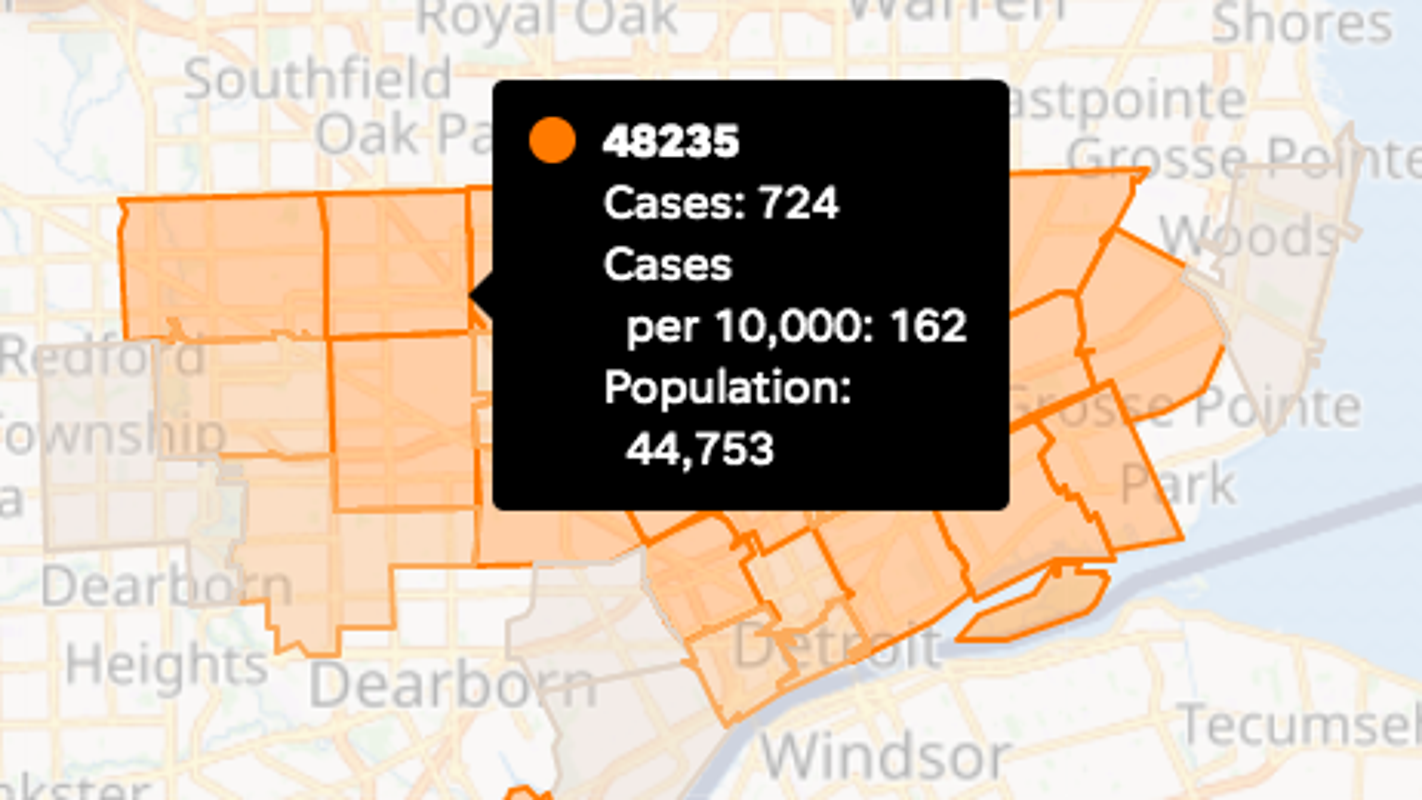Published 7: 47 p.m. ET April 17, 2020 | Updated 8: 24 p.m. ET April 17, 2020
CLOSE![]()
The City of Detroit released new health statistics on Friday — the number of confirmed COVID-19 cases by ZIP code.
Northwest Detroit’s 48235 ZIP code had the highest infection rate with 162 cases per 10,000 residents. It also had the highest number of confirmed cases — 724 local residents.
“It’s estimated that there are upwards of 10 people with undetected infections for every confirmed case, and in some communities, estimates are even higher,” said Denise Fair, Detroit’s chief public health officer.
City-wide, there have been 7,414 confirmed cases and 582 deaths due to complications from COVID-19.
Eleven ZIP codes had rates that were higher than the city-wide rate of 110 confirmed cases per 10,000 residents.
For more, including a breakdown of Oakland and Macomb county cases by ZIP code, see the full coronavirus tracker for Michigan.
Contact Kristi Tanner: ktanner@freepress.com or 313-222-8877.
Read or Share this story: https://www.freep.com/story/news/local/michigan/detroit/2020/04/17/map-coronavirus-covid-19-cases-zip-code/5156859002/






